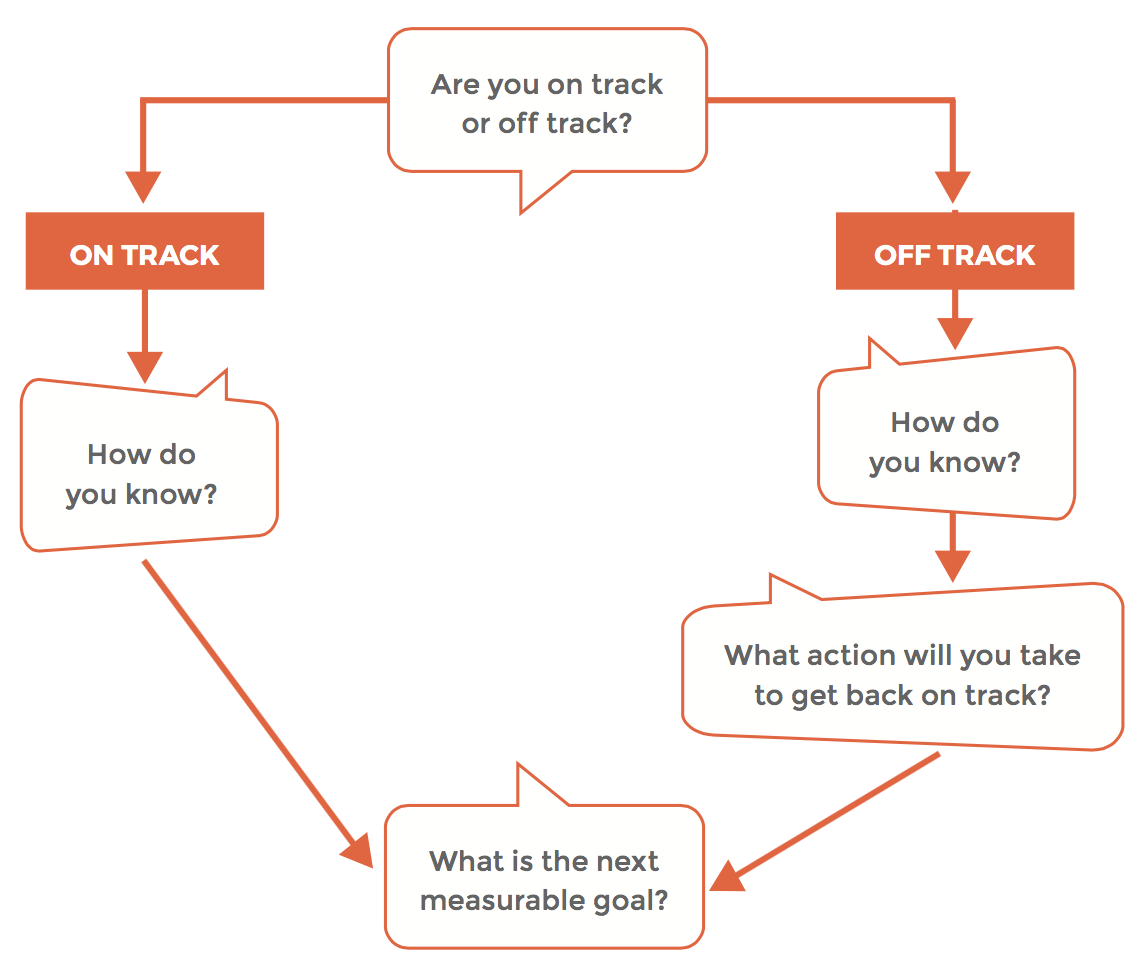Time to read: 3 min
On track/off track is a “get stuff done” framework shared with us by business coach Kate Purmal, to help us drive projects end-to-end and focus on sharing results-based updates.

Meeting fatigue infects many companies, stealing valuable time and status meetings are especially ineffective when people spend too much time reporting activities (“Last week, I worked on this and this”) and too little time reporting results, sometimes in an effort to inflate activity to compensate for a lack of results.
At Fictiv, we use on track/off track to create results-based updates and help hold each other accountable for our projects and deadlines.
The On Track / Off Track Framework

Project drivers need to ask contributors to their project one question to start: Are you on track or off track? From there, they move down the decision tree.
How to Report On Track
If a contributor responds that he or she is on track, the driver asks two important questions:
1. How do you know?
It’s the responsibility of the Driver of a given project (read up on the DACI framework for more background on Drivers/Contributors) to ask this question and judge whether or not it’s true.
It’s important that this questions is bounded with a measurable result and ideally is also time bounded.
2. What is the next measurable goal?
This is important for helping the contributor stay on track to hit the upcoming milestone.
The Driver is responsible for keeping track of this data point and ensuring everyone agrees that it’s truly the next major milestone to hit.
How to Report Off Track
While we all hope to be on track all the time, things do slip. When they do, contributors can report that they’re off track. The project Driver then needs to ask 3 questions:
1. How do you know?
Again, it’s important for the Driver to really dig into why the project is off track, to get to the root cause and hopefully find a solution.
2. What actions will you take to get back on track?
Here, it’s important to have actionable items to get the project back on track. Usually, this is done by negotiating new terms and adjusting other priorities.
3. What is the next measurable goal?
If a project is off track, it’s especially important to provide clarity around what the next milestone will be, so the project does not continue to slip.
How We’re Leveraging On Track/Off Track at Fictiv
This on track/off track framework helps us act upon our company values (stay tuned for a public deck of the Fictiv values), specifically transparency and integrity. Leveraging this framework helps us keep each other informed and encourages individuals to stay focused on their established commitments.
Here’s a good example of how to report a project status using the on track/off track framework:
“I am off track to get you the article by tomorrow at noon. I know I’m off-track because I still have two hours of research to do before being able to write the piece and estimate it will take an additional four hours to complete the piece. To get back on track I’ve talk to Nate, moved another project around and plan to get you the article by EOD tomorrow. Additionally, I’ve blocked off two hours to write the article this afternoon. You will have a final draft in your inbox by 5pm tomorrow.”
Here’s the framework as a formula:
I’m [on track/off track] to get X done by [Y time]. I know I’m off track because [ ______ ]. I’ve taken the following steps to get back on track: [ ______ ]. My next major milestone is [ ______ ], and I will have it completed by [ ______ ].
We’re finding this framework to be very effective in helping us progress efficiently toward our larger team goals and I hope this can be a helpful tool for your company as well!









